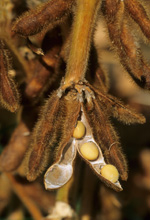
Northern New York; February 20, 2017. Two soybean diseases not previously confirmed in Northern New York crops were identified in 2016 by the annual corn and soybean disease survey and assessment funded by the farmer-driven Northern New York Agricultural Development Program. The proactive disease assessment program helps protect the security and profitability of corn and soybean, two major agricultural crops for the Northern New York region.
Survey project leader and Cornell University plant pathologist Dr. Gary C. Bergstrom, Ithaca, NY, notes, “The unusually dry conditions of the 2016 growing season resulted in very low disease pressure for corn and soybeans in general across Northern New York, but provided a unique environment which favored the development of some soybean soil-borne diseases never before confirmed in the region.”
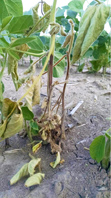
The soil-borne charcoal rot and Phythophthora root rot were confirmed in soybean in Northern New York for the first time in 2016. Fusarium root rot was first diagnosed in soybean in the region in 2015 and was present again in 2016. Northern stem canker was first identified in soybeans in Northern New York in 2014 and in 2015 and 2016.
Northern corn leaf blight was observed at relatively low levels in NNY cornfields in 2016. Bergstrom suggests regional growers plant corn hybrids with moderate resistance to the disease in 2017. Northern corn leaf blight has been identified as the most prevalent disease affecting corn production every year since this survey effort began in 2013. It occurred at its lowest levels, however, in 2016.
Prior to 2013 no systematic assessment of corn and soybean diseases had been made in the region for decades. Bergstrom is urging Northern New York growers to be alert to a potential resurgence of corn head smut which has not been a major concern in the region since the 1980s but was identified in crops in the western part of the area in 2014 and 2015.
Fifty-six farms located across the six-county Northern New York region participated in the 2016 survey. Cornell University Cooperative Extension Field Crop Specialists Mike Hunter and Kitty O’Neil noted disease symptoms and collected samples for analysis by the Bergstrom Lab at Cornell University and as needed by Wang Lab of the USDA at Cornell University.
The results of the regional work are being added to Cornell’s statewide mapping of the distribution of corn and soybean diseases to help growers make well-informed seed selection and crop management decisions.
The Northern New York corn and soybean disease survey work will continue in 2017 with new funding from the farmer-driven Northern New York Agricultural Development Program, a research and technical assistance program serving Clinton, Essex, Franklin, Jefferson, Lewis and St. Lawrence counties. Funding for the Northern New York Agricultural Development Program is supported by the New York State Senate and administered through the New York State Department of Agriculture and Markets.
Click here to go to the 2016 NNY Corn and Soybean Disease Survey Results Report

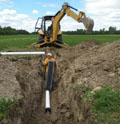
 Michele Ledoux mentioned that, as a direct result of Northern New York Agricultural Development Program-funded trials in regional sugarbushes, NNY maple producers are changing to 3/16-inch tubing for more efficient sap collection. Cornell Northern NY Maple Specialist Michael Farrell estimates the region can grow to meet a $10 million maple industry potential.
Michele Ledoux mentioned that, as a direct result of Northern New York Agricultural Development Program-funded trials in regional sugarbushes, NNY maple producers are changing to 3/16-inch tubing for more efficient sap collection. Cornell Northern NY Maple Specialist Michael Farrell estimates the region can grow to meet a $10 million maple industry potential.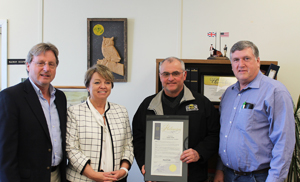
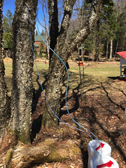
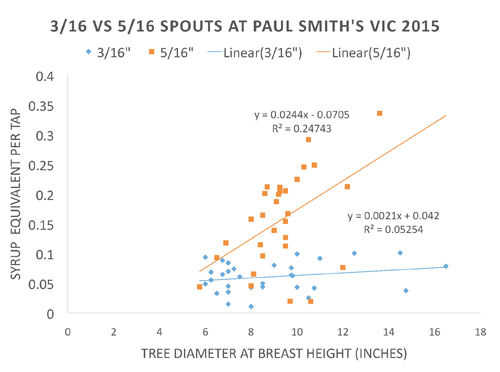
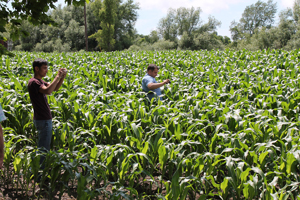
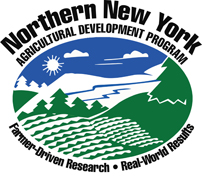 Chazy, Canton, NY; January 23, 2017. The 2017 North Country Crop Congresses will feature updates on research projects funded by the farmer-driven Northern New York Agricultural Development Program. The Program provides small grants for on-farm research and technical assistance projects in Clinton, Essex, Franklin, Jefferson, Lewis and St. Lawrence counties.
Chazy, Canton, NY; January 23, 2017. The 2017 North Country Crop Congresses will feature updates on research projects funded by the farmer-driven Northern New York Agricultural Development Program. The Program provides small grants for on-farm research and technical assistance projects in Clinton, Essex, Franklin, Jefferson, Lewis and St. Lawrence counties.